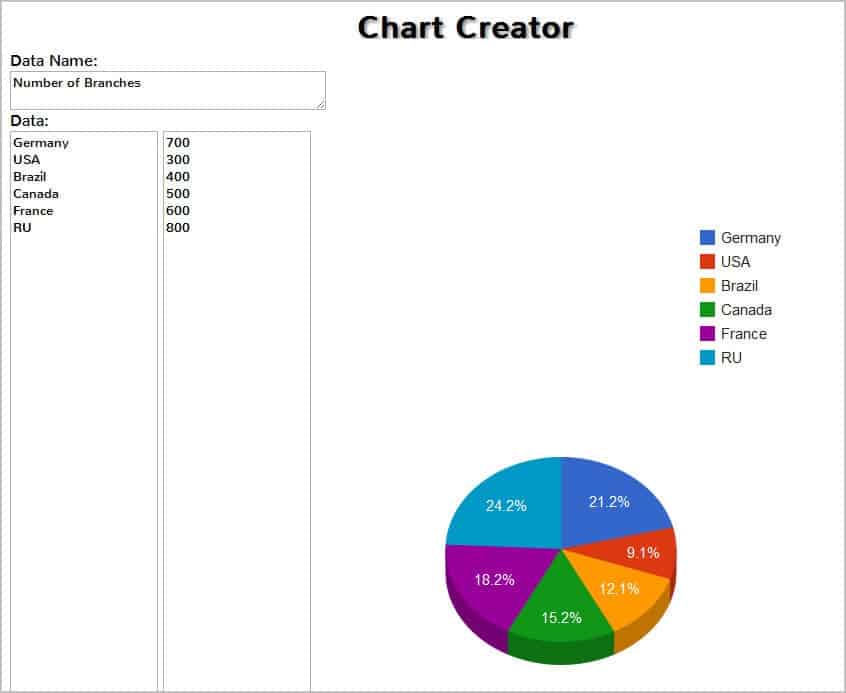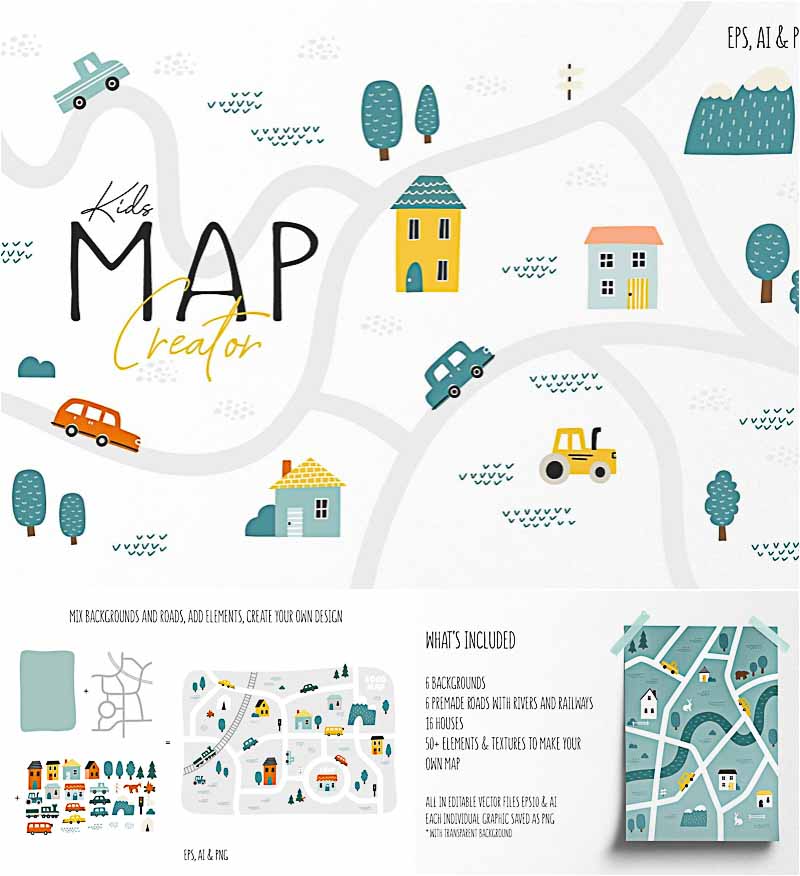
Then I create a map chart instance using the built-in function and add the geodata for the United States. Inside it, to begin with, I load the data as shown in the 3rd step.
MAP DATA CREATOR CODE
Actually, just a few quick lines will be enough!Īll the code is to be wrapped into the anychart.onDocumentReady() function so that the page is fully loaded before anything else is executed. The fourth step is for populating the script tag in the body section of the web page with the code to visualize the JS-based bubble map.

Then I use the () function to load the JSON file, within the script tag previously placed in the body section. I reference them in the head section together with the other scripts. And the other is Proj4js for transforming the coordinates to plot bubbles over the respective geographical states. One is the Data Adapter for loading the JSON data file itself. I will need two more JS files for using the data. I decided to go with JSON and created a data file with the prices of regular gasoline across the U.S., by state, which you can take a look at here. There are multiple data formats that can be used. The place for the JavaScript bubble mapping code. Then I prepare a place for the future JS mapping code itself by adding the script tag to the body section (basically, this tag can be put anywhere across the page). So, I include the two modules needed to build bubble maps, “core” and “geo maps”, as well as the geodata file for the United States. To make it all quick and straightforward, I will use the JavaScript charting library called An圜hart, precisely the AnyMap solution. That is done by adding the corresponding links wrapped in the script tags to the head section. Second, all the JS files that will be used to make a bubble map must be added to the web page.
MAP DATA CREATOR FREE
Feel free to change that as you see fit in your situation. So I’ve set the width and height of the placeholder div element as 100%.

I want the visualization to be displayed over the entire screen. Width: 100% height: 100% margin: 0 padding: 0 Then I add a block-level HTML element ( div) as the placeholder for the bubble map I also give it a unique id ( container) and set some styling. Generally speaking, there are four fundamental steps to build a basic bubble map, just like any other chart: prepare a web page, add JavaScript files, load data, and write some charting code.
MAP DATA CREATOR HOW TO
But I will show you how to do it with ease and fun. The final one will add the magnitude of the change since February 23, one day before Russia launched an attack on Ukraine.įollow along and you’ll learn to build beautiful interactive maps in JS with ease and no problem!Ĭheck out the final result of the JavaScript-based bubble mapping in this tutorial:Ĭreating interactive JS bubble maps from scratch might seem daunting and tedious. The first, basic bubble map will display the gas prices in July by state.

They saw record highs this summer after a surge fueled by the outbreak of the Russia–Ukraine conflict. In this tutorial, I will be visualizing the data on gasoline prices across the United States. It uses circles of different sizes (and sometimes colors) to indicate numeric values relating to locations or territories. And they are not difficult to create! I am eager to demonstrate that by walking you through the creation of a bubble map, one of the most popular types data maps, with the help of JavaScript.Ī bubble map is a combination of a bubble chart and a geographical map. Map charts are a great way to put data in a geographical context.


 0 kommentar(er)
0 kommentar(er)
